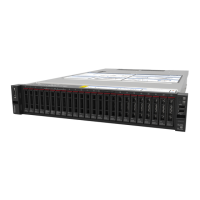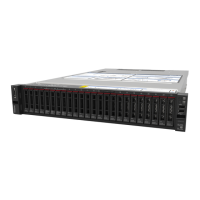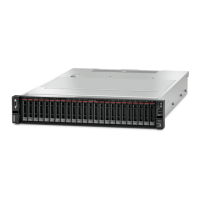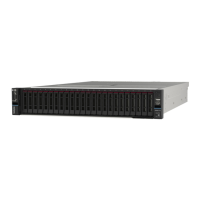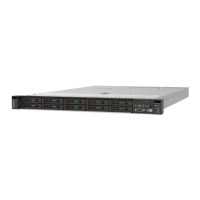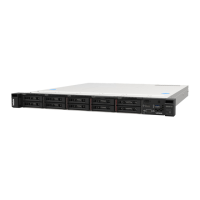https://lenovopress.com/servers/options/memory
In addition, you can take advantage of a memory configurator, which is available at the following site:
https://dcsc.lenovo.com/#/memory_configuration
Enable Software Guard Extensions (SGX)
Intel
®
Software Guard Extensions (Intel
®
SGX) operates under the assumption that the security perimeter
includes only the internals of the CPU package, and leaves the DRAM untrusted.
Make sure to refer to
“Memory module installation rules and order” on page 59, which specifies whether your
sever supports SGX and lists the memory module population sequence for SGX configuration.
Complete the following steps to enable SGX.
Step 1. Restart the system. Before the operating system starts up, press the key specified in the on-screen
instructions to enter the Setup Utility. (For more information, see the “Startup” section in the LXPM
documentation compatible with your server at
https://sysmgt.lenovofiles.com/help/topic/lxpm_
frontend/lxpm_product_page.html
.)
Step 2. Go to System settings ➙ Processors ➙ UMA-Based Clustering and disable the option.
Step 3. Go to System settings ➙ Processors ➙ Total Memory Encryption (TME) and enable the option.
Step 4. Save the changes, then go to System settings ➙ Processors ➙ SW Guard Extension (SGX) and
enable the option.
RAID configuration
Using a Redundant Array of Independent Disks (RAID) to store data remains one of the most common and
cost-efficient methods to increase server's storage performance, availability, and capacity.
RAID increases performance by allowing multiple drives to process I/O requests simultaneously. RAID can
also prevent data loss in case of a drive failure by reconstructing (or rebuilding) the missing data from the
failed drive using the data from the remaining drives.
RAID array (also known as RAID drive group) is a group of multiple physical drives that uses a certain
common method to distribute data across the drives. A virtual drive (also known as virtual disk or logical
drive) is a partition in the drive group that is made up of contiguous data segments on the drives. Virtual drive
is presented up to the host operating system as a physical disk that can be partitioned to create OS logical
drives or volumes.
An introduction to RAID is available at the following Lenovo Press website:
https://lenovopress.com/lp0578-lenovo-raid-introduction
Detailed information about RAID management tools and resources is available at the following Lenovo Press
website:
https://lenovopress.com/lp0579-lenovo-raid-management-tools-and-resources
Notes:
• Before setting up RAID for NVMe drives, follow the below steps to enable VROC:
1. Restart the system. Before the operating system starts up, press the key specified in the on-screen
instructions to enter the Setup Utility. (For more information, see the “Startup” section in the LXPM
450
ThinkSystem SR650 V3 User Guide
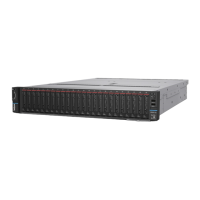
